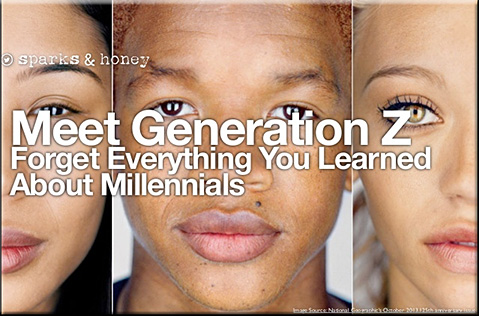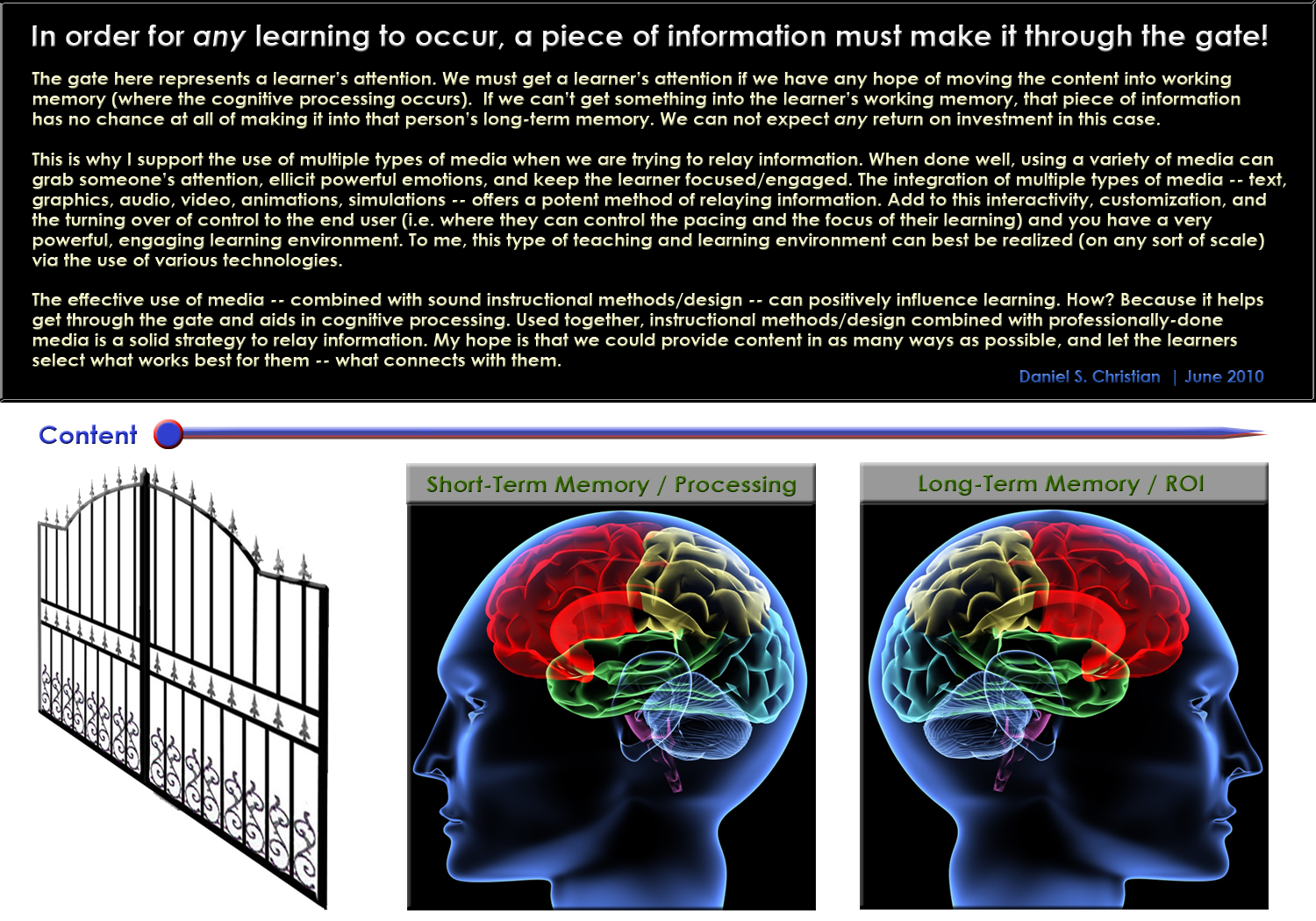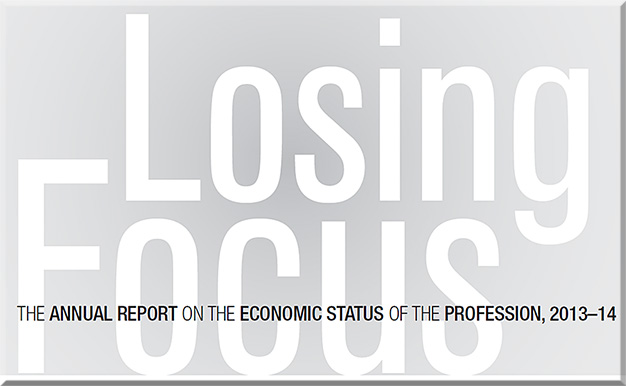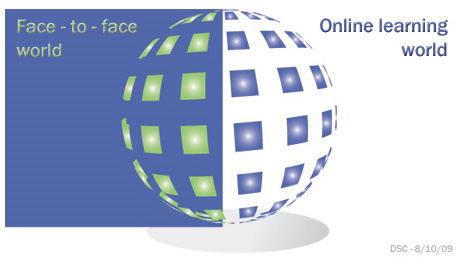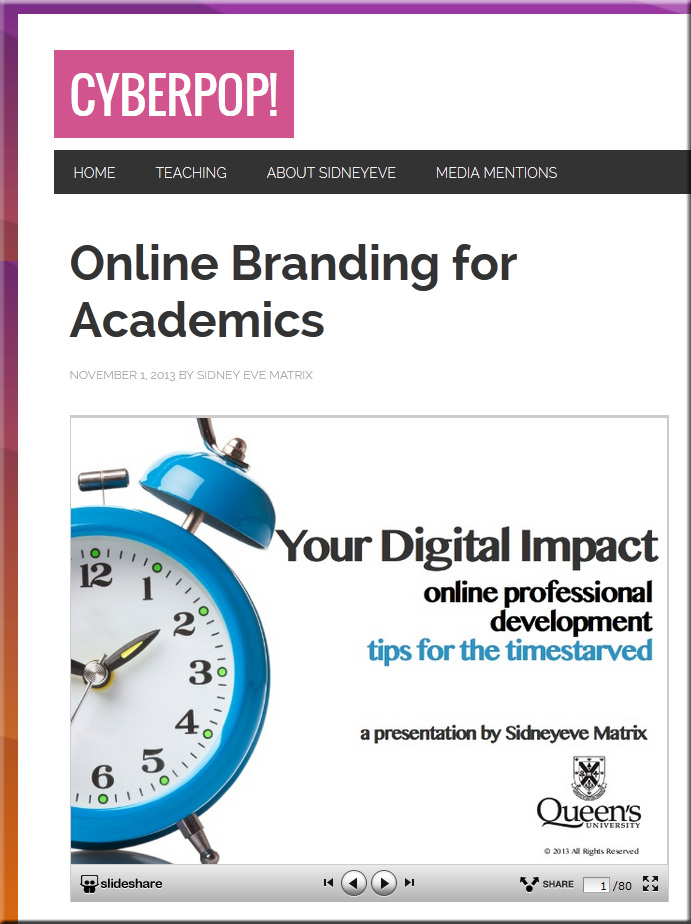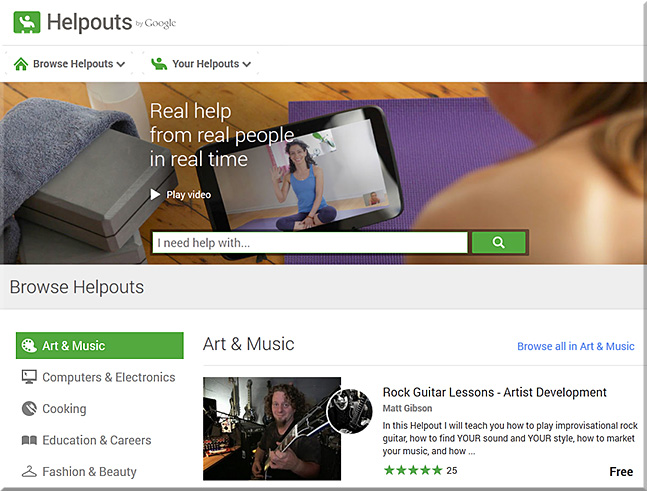Here Comes Generation Z — from bloombergview.com by Leonid Bershidsky
Excerpts:
If Y-ers were the perfectly connected generation, Z-ers are overconnected. They multi-task across five screens: TV, phone, laptop, desktop and either a tablet or some handheld gaming device, spending 41 percent of their time outside of school with computers of some kind or another, compared to 22 percent 10 years ago. Because of that they “lack situational awareness, are oblivious to their surroundings and unable to give directions.”
Members of this new generation also have an 8-second attention span, down from 12 seconds in 2000, and 11 percent of them are diagnosed with attention deficiency syndrome, compared to 7.8 percent in 2003.
Also see Sparks & Honey’s presentation:
From DSC:
I have been wondering about the possibility that gaining students’ attention is becoming harder and harder to do. The above items seem to confirm that attentions are, in deed, shrinking. We must get through “the gate” (i.e., getting someone’s attention) if we want to have a chance of getting something into someone’s long term memory.
So what should professors, teachers, and trainers do?
For me, this is where things like active learning, project-based learning, and real-world learning come in. Highly relevant, hands-on learning where we turn over more control to the student, helping them own their own learning. We need to provide more choices as to how students can meet the learning objectives.
More choice. More control. Tap into their passions and internal motivations, introduce more play and more opportunities for students to display and cultivate their creativity.
The following article also has some solid thoughts/ideas that seem very relevant for this topic:
- The Science of Attention: How To Capture And Hold The Attention of Easily Distracted Students — from opencolleges.edu.au by Saga Briggs
Excerpt from section entitled, “Tricks for Capturing Your Students’ Attention“:
1. Change the level and tone of your voice.
Often just changing the level and tone of your voice – perhaps by lowering or raising it slightly – will bring students back from a zone-out session.
.
2. Use props or visuals.
Presenting a striking picture related to your topic is sure to get all eyes on you. Don’t comment on it; allow students to start the dialogue. Here are a few resources on how to use animations and storyboards as a teaching tool.
.
3. Make a startling statement or give a quote.
Writing a surprising statement or quote related to the content on the board has a similar effect. In a lesson about linebreaks in poetry, write, “I am dying” on the board, wait a minute, and continue on the next line with “for a bowl of ice cream.” See what kind of reaction you get.
.
4. Write a challenging question on the board.
…









